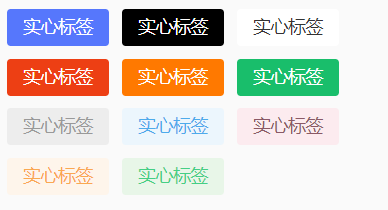标签:mic radius 使用 状态 关系 大小 hit fonts handle
面向对象是一种对现实世界理解和抽象的方法。一切事物皆对象,通过面向对象的方式,将现实世界的事物抽象成对象,现实世界中的关系抽象成类、继承,帮助人们实现对现实世界的抽象与数字建模。
Vue官方文档对组件的讲解貌似不太友善,网络上的许多讲解似乎也是以Vue官方文档的视角去看待组件的,如果你学了Java、C#等面向对象编程语言,以这些语言的视角去理解Vue组件,其实多少能意识到组件这一概念和面向对象编程的方式和风格相似。
类是具有相同特性(数据元素)和行为(功能)的对象的抽象。类具有属性,它是对象的状态的抽象;类具有操作,它是对象的行为的抽象。
将这句话中的“类”换成“组件”,来看看会发生什么样的变化?↓ ↓ ↓
组件是具有相同特性(数据元素)和行为(功能)的对象的抽象。组件具有属性,它是对象的状态的抽象;组件具有操作,它是对象的行为的抽象。
将“类”与“组件”置换之后,如果没有感觉违和,恭喜你,已经对组件有了深刻的认识。
在使用Java类时,可以在new对象时通过构造函数传递参数,而在使用组件时,可以通过props传递参数(props用于父组件传递子组件时用到的属性)。
这是ThorUI组件库中封装好的tui-button.vue的源码:
<template>
<button
class="tui-btn"
:style="{
width: width,
height: height,
lineHeight: height,
fontSize: size + ‘rpx‘,
margin: margin
}"
@tap="handleClick"
>
<slot></slot>
</button>
</template>
在:style中有两个可自定义的属性width和height
props: {
// 宽度 rpx 或 %
width: {
type: String,
default: ‘100%‘
},
// 高度 rpx
height: {
type: String,
default: ‘96rpx‘
}
}
在使用组件时可以为这两个参数传递值来设置按钮的高和宽
<tui-button
:height="‘75rpx‘"
:width="‘150rpx‘"
>
登录
</tui-button>
我们现在来设计一个Button类,其属性包含了有width和height。
package components;
public class Button {
// 宽度 rpx 或 %
private String width;
// 高度 rpx
private String height;
public Button() {
}
public Button(String width, String height) {
this.width = width;
this.height = height;
}
public String getWidth() {
return width;
}
public void setWidth(String width) {
this.width = width;
}
public String getHeight() {
return height;
}
public void setHeight(String height) {
this.height = height;
}
}
在使用Button类时,通过构造函数来设置width和height的值
Button button = new Button("75rpx", "150rpx");
在多次使用到相同的函数和相同的html代码片段时,可以考虑抽取为组件,并提供一些props,当使用组件时,可以通过props对组件进行自定义设置。

在许多网页中可以看到这些标签组件,如果我们自己不封装组件,在每次使用的地方都来写重复的view标签、css代码,不会觉得繁琐吗?
所以,我们把这些重复的html和css全部抽取到一个组件中去,并为这个组件命名一个独一无二且漂亮的名字,在不同的情况下设置props改变标签的大小、颜色等。
<template>
<view
:style="{ width: width, height: height }"
:class="[‘owl-tag-‘ + type]"
class="owl-tag text-xs flex align-center justify-center"
>
<slot></slot>
</view>
</template>
现在,我们将基本的结构写好了,然后绑定一些style和class类,在使用组件时,传入width和height之后会设置组件的高和宽,在传入type后,会设置组件的颜色。
props中给出的属性如下:
<script>
name: ‘owl-tag‘,
props: {
// 可传入有效值为 primary | gray
type: {
type: String,
default: ‘primary‘
},
width: {
type: String,
required: false
},
height: {
type: String,
required: false
}
}
</script>
在style中写出传入type时对应的css样式
.owl-tag {
border-radius: 8rpx;
padding: 6rpx 10rpx;
}
.owl-tag-primary {
color: white;
background-color: #87cefa;
}
.owl-tag-gray {
color: #81868a;
background-color: #f0f1f5;
}
这些工作做好了,一个组件就被我们定义好了,以后想用标签,在template中就这样使用
<owl-tag
:type="‘primary‘"
:height="‘45rpx‘"
:width="‘120rpx‘"
>
官方帖
</owl-tag>

改变type的值为gray,呈现的效果如下

什么是Vue组件以及如何定义组件?(结合面向对象理解Vue组件)
标签:mic radius 使用 状态 关系 大小 hit fonts handle
原文地址:https://www.cnblogs.com/kongsam/p/14694153.html